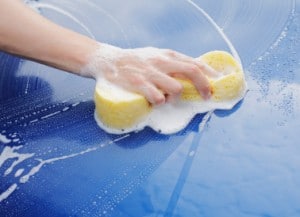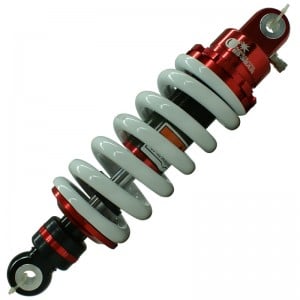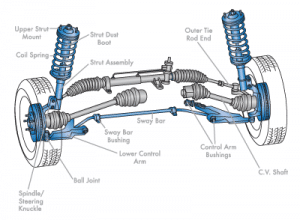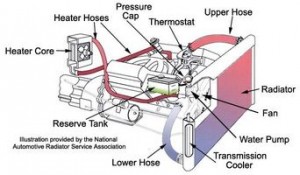Race cars may be more powerful than their street counterparts, but that doesn’t mean it can take care of itself. Before you get on the track, make sure that your car is in good condition. Generally speaking, race cars should be inspected every week, although the frequency may vary depending on how often you race.
Thorough Cleaning
 Before anything else, give your car a thorough cleaning. It doesn’t matter if you race off-road, a street circuit or an oval, because dirt and other particles will find their way in the car. Many people like to use a pressure washer, but race cars have a lot of sensitive parts that shouldn’t get drenched. For instance, a pressure washer can damage the ignition, electrical systems, brake caliper seals, engine, transmission and other delicate components. Instead of a pressure washer, use a garden hose, bucket full of water and soap. This will take more work, but you don’t run the risk of damaging any parts.
Before anything else, give your car a thorough cleaning. It doesn’t matter if you race off-road, a street circuit or an oval, because dirt and other particles will find their way in the car. Many people like to use a pressure washer, but race cars have a lot of sensitive parts that shouldn’t get drenched. For instance, a pressure washer can damage the ignition, electrical systems, brake caliper seals, engine, transmission and other delicate components. Instead of a pressure washer, use a garden hose, bucket full of water and soap. This will take more work, but you don’t run the risk of damaging any parts.
Check the Shock Absorbers
 Shock absorbers bear the brunt of the pressure when you race, so clean and inspect them weekly, cleaning and if necessary replacing them. Make sure to check the shaft and body for dings, bends and dents, particularly bends. You should look for signs of worn out seals, and make sure the rod guides don’t let the piston get misaligned because it leads to premature wear and tear. When you do clean rod ends and rubber seals, be certain you use an electrical cleaner that’s designed for race cars.
Shock absorbers bear the brunt of the pressure when you race, so clean and inspect them weekly, cleaning and if necessary replacing them. Make sure to check the shaft and body for dings, bends and dents, particularly bends. You should look for signs of worn out seals, and make sure the rod guides don’t let the piston get misaligned because it leads to premature wear and tear. When you do clean rod ends and rubber seals, be certain you use an electrical cleaner that’s designed for race cars.
Inspect the Suspension
 Suspension linkages are very important so you should check the spindles for any signs of cracks or spindles. If you don’t have a spindle checker you should get one. Note that spindle eyes have to line up through the tapers’ center, and these can get misaligned when racing on a bumpy track so check it regularly.
Suspension linkages are very important so you should check the spindles for any signs of cracks or spindles. If you don’t have a spindle checker you should get one. Note that spindle eyes have to line up through the tapers’ center, and these can get misaligned when racing on a bumpy track so check it regularly.
You should also inspect the ball joints and make sure they’re straight. To do this, just remove the shock and spring and steer the vehicle right and left. If you notice the spindle moving up and down or behaving erratically, check the ball joint because it’s probably misaligned. Ball joints also need greasing and you need to inspect the rod ends for extraneous slop, and lubrication is required as well. You also need to inspect the upper control arm for bends, because the slightest bend can result in a bind.
Radiator Cleaning
 Finally, you need to clean the radiator regularly, because a plugged or leaking radiator that doesn’t cool quickly can cause serious problems. If you race on dirt tracks, clean the radiator once a week with a low pressure water hose. When washing, flush back to front so dirt is pushed out, and while you’re cleaning check the radiator hose clamps for leaks or damage.
Finally, you need to clean the radiator regularly, because a plugged or leaking radiator that doesn’t cool quickly can cause serious problems. If you race on dirt tracks, clean the radiator once a week with a low pressure water hose. When washing, flush back to front so dirt is pushed out, and while you’re cleaning check the radiator hose clamps for leaks or damage.
Finally, don’t forget to bolt your race car. The more you race, the higher the odds that a few bolts will be loosened here and there, so check the car before each race.

